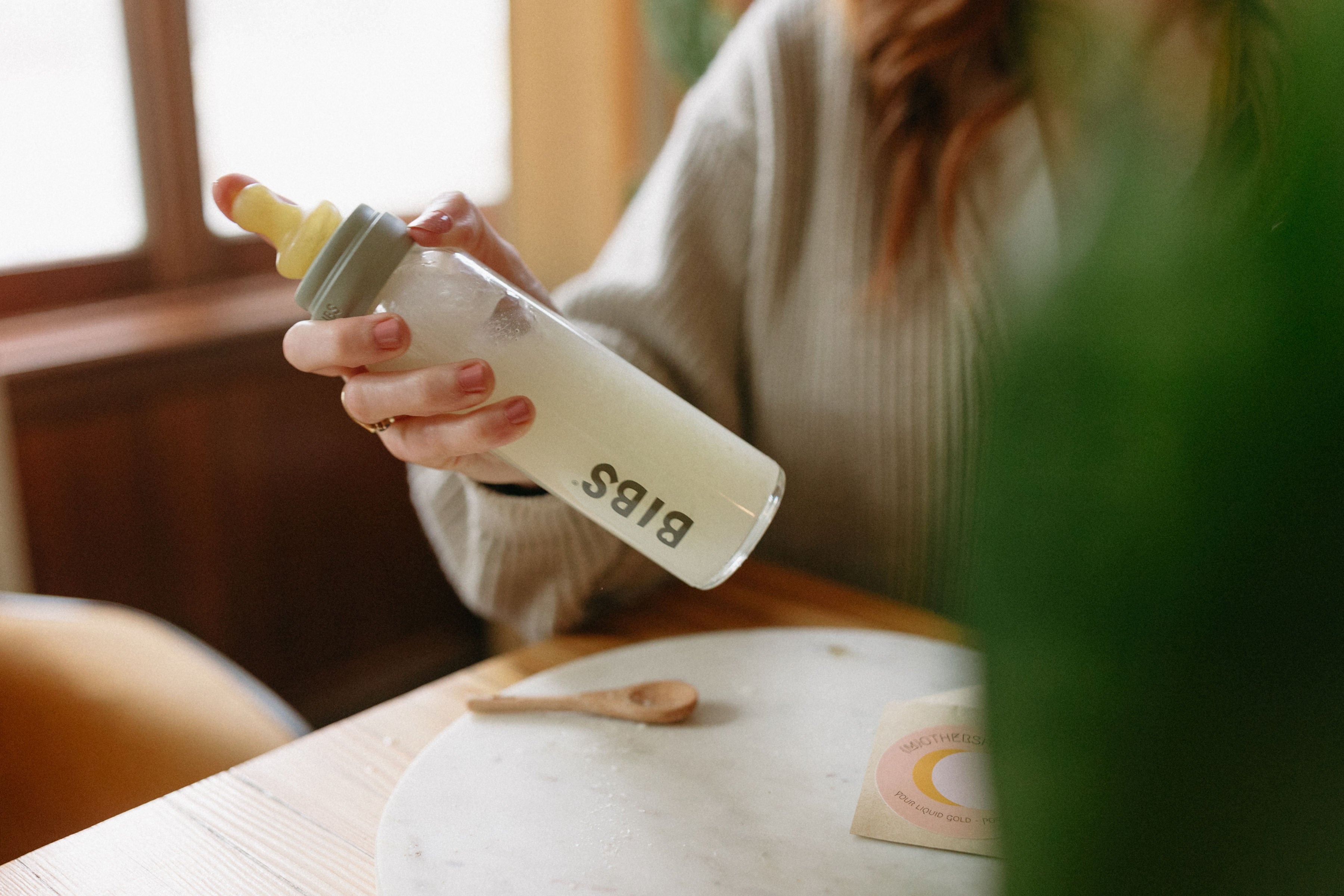
How to use single-serve packets:
Your single-serve packets has been portioned to make a 4 oz bottle. Follow these simple steps to rehydrate your milk:
- Thoroughly wash your hands with warm, soapy water for at least 20 seconds.
- Clean and sanitize your workspace where you will be preparing Mothership Milk and bottles.
- Using your personalized conversion rate listed on each packet of your Mothership Milk, measure purified water and fill pre-sterilized bottle.
- Open packet, discard oxygen absorber and add the powder to the bottle. Be sure to add the water first, then the powder to ensure the appropriate amount of water to powder ratio is used (too much water might reduce nutritional value whereas not enough water can cause dehydration and be taxing on the kidneys and digestive system).
- Mix powder and water together by shaking the bottle. Sometimes, it might take more time for the fats to dissolve. If this happens, shake a little more or run the bottle under warm water while covering the nipple and being careful not to accidentally add more water.
- Test the rehydrated milk’s temperature before serving.
These guidelines were created under the CDC’s guidance on the preparation and storage of powdered infant formula and human milk.
For best results, we suggest using a glass bottle, as fats can stick to the sides of of plastic or silicone bottles. Clumping is normal, but if excessive clumping occurs use warmer water to rehydrate (do not exceed 104F).
Storing single-serve Mothership milk:
Freeze-dried milk powder can be stored in a dark, cool, dry place. Suggested use is 3 years from date of packaging. Once your packet of {m}othership milk powder has been opened, be sure to re-seal when not in use and use the powder within 7 days and then discard. If moisture is introduced into bag, discard immediately .
Once rehydrated, {m}othership milk should be treated and handled with the same care as previously frozen milk. Rehydrated {m}othership milk can be stored at room temperature for up to 2 hours or 1 hour from when feeding begins (as bacteria from baby’s saliva can be introduced). If you do not use the milk right away, place it in the fridge immediately for up to 24 hours and then discard. Rehydrated milk should not be refrozen or microwaved.
How to use multi-serve bags:
Follow these simple steps to rehydrate your milk:
- Thoroughly wash your hands with warm, soapy water for at least 20 seconds.
- Clean and sanitize your workspace where you will be preparing {m}othership milk and bottles.
- Using your personalized conversion rate listed on the bag, pour desired amount of purified water into pre-sanitized bottle.
- Open packet, discard oxygen absorber and correct amount of powder to the bottle using a clean, dry, level scoop. Be sure to add the water first, then the powder to ensure the appropriate amount of water to powder ratio is used (too much water might reduce nutritional value whereas not enough water can cause dehydration and be taxing on the kidneys and digestive system).
- Mix powder and water together by shaking the bottle. Sometimes, it might take more time for the fats to dissolve. If this happens, shake a little more or run the bottle under warm water while covering the nipple and being careful not to accidentally add more water.
- Test the rehydrated milk’s temperature before serving.
These guidelines were created under the CDC’s guidance on the preparation and storage of powdered infant formula and human milk.
For best results, we suggest using a glass bottle, as fats can stick to the sides of of plastic or silicone bottles. Clumping is normal, but if excessive clumping occurs use warmer water to rehydrate (do not exceed 104F).
Storing multi-serve {m}othership milk :
Sealed freeze-dried milk powder should be stored in a dark, cool, dry place. Suggested use is 3 years from date of packaging. Once opened, remove oxygen absorber and make note of the day the bag was opened.
Re-seal bag when not in use and ensure zipper is closed tightly to maintain freshness. Suggested use is within 30 days from opening, then discard. Do not store measurement utensils in the bag. Discard entire bag if moisture is introduced.
Once rehydrated, {m}othership milk should be treated and handled with the same care as previously frozen milk. Rehydrated {m}othership milk can be stored at room temperature for up to 2 hours or 1 hour from when feeding begins (as bacteria from baby’s saliva can be introduced). If you do not use the milk right away, place it in the fridge immediately for up to 24 hours and then discard. Rehydrated milk should not be refrozen or microwaved.




